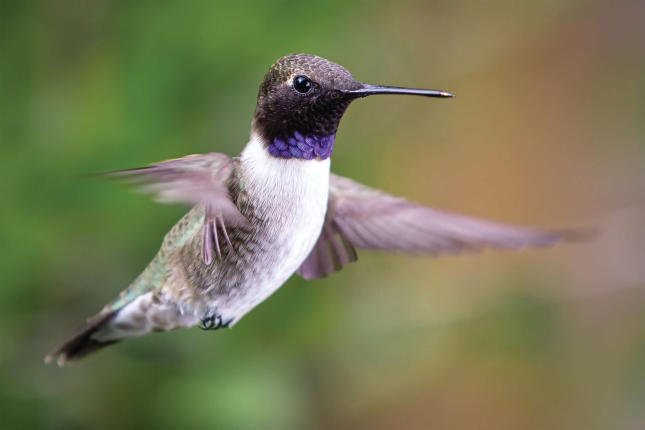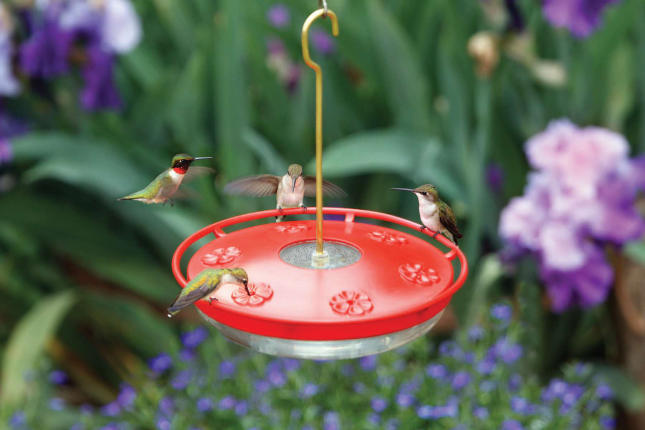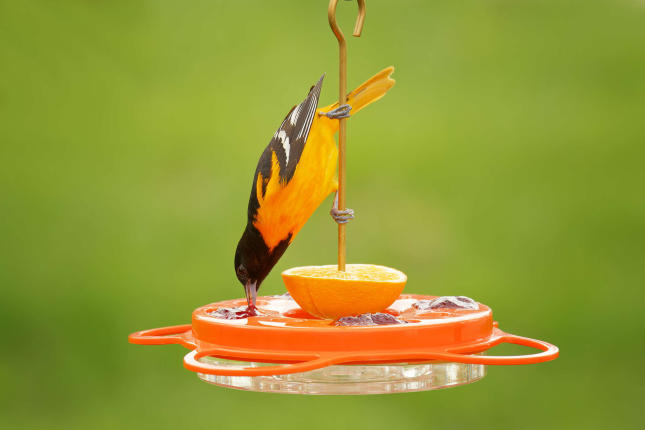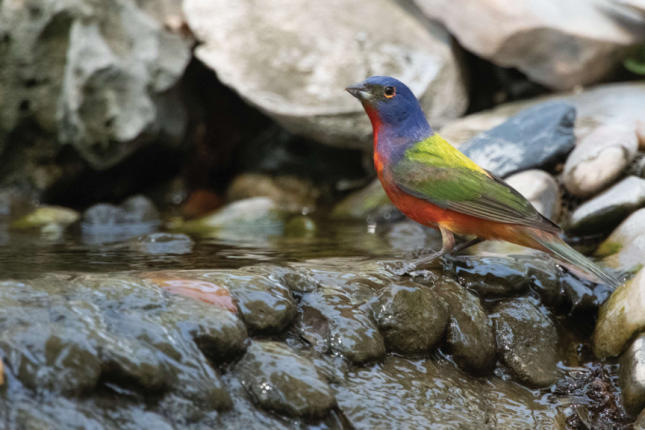Wait–What did I just see?
By Ginny Lindzey, Team Leader, Wild Birds Unlimited
Last April, more than 62 million birds crossed over Travis County.* For songbirds, migration is a nocturnal journey from places like Central America and Mexico, often directly over the Gulf of Mexico, with a stop in Texas either to refuel or even to stay and breed. It is an extraordinary time of year if we can get ourselves to slow down and to notice the variety of life in our own backyards.
Black-chinned Hummingbirds and Ruby-throated Hummingbirds start arriving in our area in early March. Red flowering native plants such as salvias, honeysuckle, and acanthus provide these summertime visitors food, or you can put out a feeder with a simple nectar (1 part sugar to 4 parts water). Hummingbirds also eat small spiders and other tiny insects, so think twice before tidying away those spiderwebs.
Baltimore Orioles will briefly pass through on their journey farther north, but can be bribed to stay for a few weeks by offering oranges, grape jelly, and nectar. Birds like Summer Tanagers and Yellow-billed Cuckoos can be convinced to stay even longer if your yard offers an abundance of insects and caterpillars on native plants. Avoid using pesticides if you want to see some of these travelers.
Another much anticipated April arrival is the rainbow-colored Painted Bunting. If you are lucky enough to have this dazzling bird make an appearance in your yard, offer it millet in a tube or tray feeder. Beautiful blue Indigo Buntings pass through as well, but most are heading farther north, as are a variety of warblers and flycatchers, too many to name.
You don’t need to be a bird expert to enjoy this marvelous time of year. The Cornell Lab of Ornithology offers a free app called Merlin Bird ID that can identify birds for you, recognizing them by sound, picture, or even a simple description. Merlin makes birding accessible to anyone and any age, demystifying this enchanting world just outside your door.
But Merlin can’t do it all: you need to ensure that your yard is a welcoming habitat. Providing fresh food, clean water, and shelter, whether from native plants or supplemental feeders and nesting boxes, gives them a secure environment, allowing them to build nests and raise young. In return, you receive the mental-health benefits from watching and listening to the birds, which include long-lasting stress relief. And most of all, it’s fun!
* See the Birdcast Migration Dashboard at https://dashboard.birdcast.info.


Black-chinned Hummingbird Ruby Throated Hummingbird



